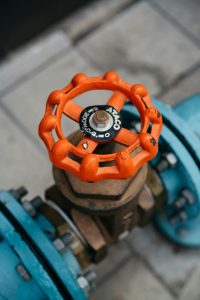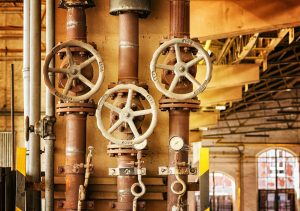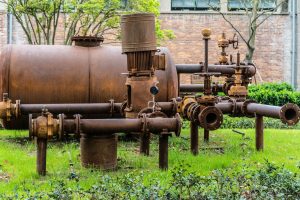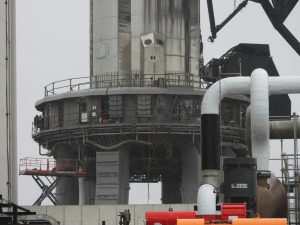Table of Contents
ToggleA needle or ball-shaped valve is used to hold back large amounts of liquid or gas. Because they must hold back such large volumes, they must be very durable. Many liquids and gases contain chemicals that can damage various materials. Stainless steel is the most common material for needle valves. It resists corrosion and rust and is also low-maintenance.
Another major advantage of the needle valve is its precision. The needle can be shifted to minute degrees, making it an ideal choice for precise flow regulation. This allows users to achieve unprecedented levels of efficiency, using only the amount of flow needed. When precision and accuracy are needed, needle valves are the best option.
When comparing these two types of valves, it is important to consider their use in specific applications. The needle is better suited to lower flow rates because it can be fine-tuned for precise control. A ball valve is generally cheaper than a needle valve, but it is also more durable. It is also useful for many throttling applications. If you need precise control and accuracy, needle valves are the way to go.
To learn more about the difference between a needle valve and a ball valve, continue reading this article.
What Is a Needle Valve?
A needle valve is a type of mechanical valve used in a variety of different applications. Its name comes from its unique design, which allows it to work in either high or low-temperature conditions. Because needle valves must be resistant to extreme temperatures, users must specify their requirements for packing and valve housing.
A needle valve has a very small opening, making it not a good choice for high-flow settings. Because the opening is so small compared to the valve body, the needle is difficult to operate and prone to damage in high-flow situations. As a result, it is generally not suited for high-flow applications. However, it does offer a high level of flexibility and is an excellent option for many different applications.
Another common use for needle valves is in metering line service, where the flow rate can be controlled by the metering line. This type of valve allows users to regulate flow rates from low to high in precise measurements. This is particularly advantageous for companies that are responsible for maintaining strict control over their production processes.
Another use for a needle valve is in gas piping. A needle valve is used in applications where precision is essential. The needle valve will not be used for a simple on/off the system. A needle valve will be necessary for applications that require degree differences and precise calculations.
What Is a Ball Valve?
A ball valve is a type of control valve that is a combination of two parts – a ball and a body. A ball valve can be operated by hand, electric, pneumatic, or hydraulic means. Ball valves are commonly made of brass, an alloy of copper and zinc. The copper in brass inhibits the reproduction and growth of microbes and provides antimicrobial properties.
The body of the valve serves as the pressure vessel for the ball. These valves are typically made of metal alloys but can be made from plastic. Some are multi-piece designs, meaning that they can be disassembled and repaired if necessary. Those with a single-piece body, on the other hand, are not repairable. These valves are easy to operate and maintain and can withstand pressures up to 1,000 bar.
When used in the food, pharmaceutical, or bioprocessing industries, cavity-filled ball valves are an excellent choice. They provide excellent sanitary control and can be used to regulate solid-liquid mixtures. They also can prevent the accumulation of particles, causing the valve to stick.
Needle Valve Vs. Ball Valve
When comparing a needle valve to a ball-shaped valve, you will notice that the former is more suited to applications requiring a high degree of accuracy and control. Examples of such applications include fluid power systems, gas bleeder lines, and sampling lines. However, a needle valve is not ideal for applications requiring rapid on and off switching because it requires multiple rotations of the screw handle to change its state.
Despite the similarity between the two-valve designs, a ball-shaped valve is preferred for applications where switching between closed and fully opened states is frequent and rapid. The valve’s air-tight sealing capabilities ensure that pressure drop is minimal in high-flow operations. Another major advantage of a ball valve is its design, which features a handle that lies parallel to the flow when the valve is open, and a perpendicular surface when it is closed.
A key difference between a ball-shaped valve and a needle-shaped valve lies in how the two are used. A ball valve, on the other hand, can be installed in either direction. The difference lies in the way the two valves are installed, but the latter is a better choice for controlling airflow in a cylinder. A needle-shaped valve can be throttled to slow the outflow of compressed air, while a ball-shaped valve can limit the inflow of compressed air.
While the needle-shaped valve has its advantages, it lacks some important aspects. For one, it has a smaller port for more precise regulation of flow. Its tapered seat and needle-shaped plunger make it possible to regulate the flow precisely, although it has a limited range of operating flow rates. If you’re looking for a valve that works with high flow rates, a needle-shaped valve is not the right choice.










